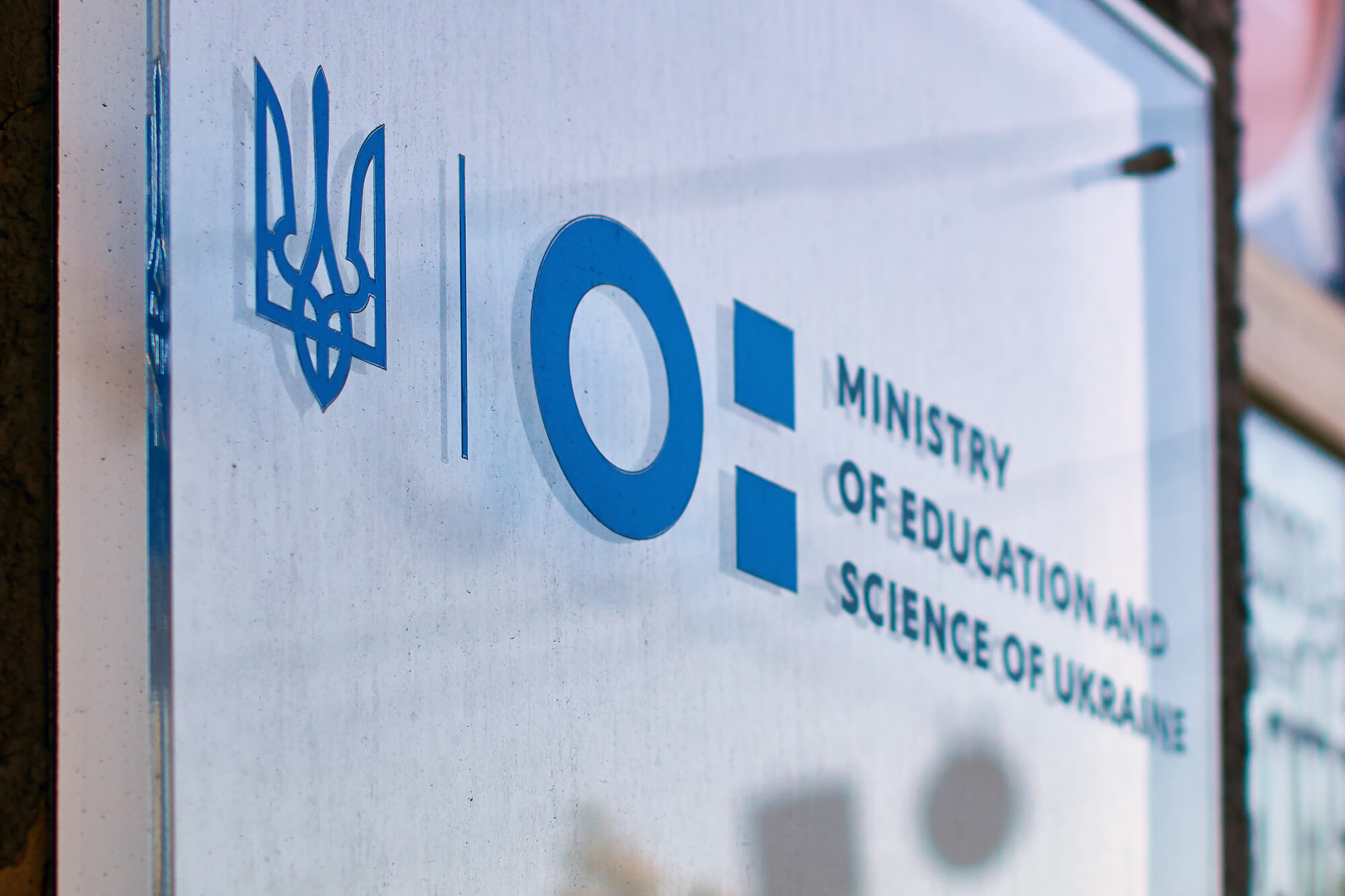As of June 17, the additional registration period for the 2025 Unified Entrance Exam (UEE) for admission to master’s and doctoral programs has ended. This year, 99,385 individuals registered for the UEE for master’s admission and 16,371 for doctoral admission.
Last year, the UEE became mandatory for admission to doctoral programs for the first time. The number of candidates wishing to take the exam was double the Ministry of Education’s expectations—276,000 registered to participate.
This surge of interest in master’s and doctoral admissions is likely linked to the opportunity to obtain a deferral from mobilization by pursuing a level of education higher than previously attained. To assess the readiness and motivation of doctoral applicants, another new requirement has been introduced for 2025: for the first time, future postgraduate candidates must take, in addition to the UEE, a Unified Entrance Exam in Research Methodology.
What is the UEE?
The Unified Entrance Exam (UEE) is the standardized admission test for master’s and doctoral programs in Ukraine.
The UEE was first piloted in 2016. Initially, it consisted only of a foreign language test—applicants could choose between English, German, French, or Spanish. Since 2022, it has also included the Test of General Academic Competence (TGAC).
The exam was first applied for admission to master’s programs in the field of Law at nine selected universities. Each year, the list of fields for which the UEE was mandatory expanded. In 2018, it was required for 18 specialties; by 2019, the number had grown to 32. A major expansion occurred in 2020 when the UEE became compulsory for more than 80 specialties. That year, applicants to programs in “Education/Pedagogy,” “Agrarian Sciences and Food,” “Military Sciences, National Security, and State Border Security,” and “Music Arts” were exempt from taking the foreign language portion of the UEE. However, beginning in 2021, the foreign language test became mandatory for admission to all master’s programs, without exception.
Applicants to the “Law” and “International Law” specialties were additionally required to take the Unified Professional Entrance Exam (UPEE) alongside the UEE. The list of fields requiring the vocational test changes from year to year.
Due to the full-scale invasion, in 2022, the UEE was temporarily replaced for most specialties by the Master’s Test of Academic Competence (MTAC), which assessed general academic skills—specifically verbal-communicative and logical-analytical abilities. For admission to “Law” and “International Law,” the Master’s Comprehensive Test (MCT) was introduced. It included both foreign language and law components.
Since 2023, the UEE has been reinstated as an online computer-based test, which remains in use for the 2024 and 2025 admission cycles. It consists of two mandatory components:
- Foreign language test (chosen by the applicant: English, German, French, or Spanish)
- Test of General Academic Competence (TGAC): assesses the applicant’s analytical reasoning and verbal communication skills—that is, their ability to comprehend and analyze texts, identify logical relationships, and draw reasoned conclusions.
Chart 1. Statistics on the number of UEE foreign language test registrants and their average score (2019–2024)
Note: The average UEE score for foreign languages is calculated across all four options—English, German, French, and Spanish. Data for the TGAC has been included since 2022, although it became a mandatory component only in 2023. The UEE is scored on a scale from 100 to 200 points, with 100 being the minimum and 200 being the maximum possible score.
Source: Author’s own calculations based on anonymized data from the Ukrainian Center for Educational Quality Assessment (UCEQA).
In 2022, the average test score was higher than usual. This was largely due to wartime conditions when only highly motivated individuals chose to take the exam; the simplified format and online delivery also contributed. By 2023, the average score had returned to pre-war levels.
In 2024, the number of applicants for master’s and doctoral programs increased by a factor of 2.6—partly due to the so-called “mobilization gap,” whereby full-time study in a master’s or doctoral program provides grounds for a deferral from conscription. At the time, Minister of Education and Science Oksen Lisovyi announced the introduction of special admission rules for doctoral candidates and pledged to assess the knowledge level of exam participants.
In 2024, the percentage of applicants who failed to meet the passing score rose from 0.6% in 2023 to 4.2%. Nonetheless, the threshold score remains significantly lower than it was in 2019–2021 (see Chart 2).
Chart 2. Percentage of applicants who did not meet the threshold, by passing score level (as a percentage of the maximum possible score)
The minimum passing threshold for the UEE is determined annually through an expert evaluation process. A dedicated panel of specialists analyzes the test’s difficulty, determines the number of correct answers expected from a minimally prepared applicant, and considers task performance statistics from actual test-takers. Based on this analysis, the UCEQA sets the cutoff score on a scale from 100 to 200.
In 2019, one-third of applicants failed to meet the threshold, which was set at 12 out of a possible 42 points—nearly one-third of the maximum score. In 2020–2021, the proportion of those who did not pass remained stable, thanks to the annual adjustment of the threshold after each test session.
In 2022, the threshold was eliminated—scoring just 1 point was sufficient to qualify. Still, 0.02% of participants did not pass the UEE that year (two test results were annulled).
In 2023, the minimum passing score was set at 3 out of 30; by 2024, it had increased to 5 out of 30.
Important: This article focuses specifically on the threshold for admission to master’s programs, as the UEE only became mandatory for doctoral programs in 2024. Different rules apply to doctoral admissions: in 2024, applicants were initially required to score at least 20 raw points on the foreign language test (roughly equivalent to 160 points on the UEE scale). Later that same year—during the admissions process itself, as rules were being changed on the fly—the foreign language requirement for doctoral admission was made optional.
Geography of UEE-2025 results: Which regions performed best
The 2025 UEE results vary significantly by region. Although the test structure is standardized nationwide, differences in educational opportunities, preparation conditions, and applicant motivation across regions have influenced the average scores, the proportion of those who did not meet the threshold, and the gender composition of participants.
The highest average scores were traditionally recorded in Kyiv (150 points), the Lviv region (148), and the Odesa region (146). These regions are characterized by a high concentration of universities, strong humanities education, and intense competition for admission. They also had the lowest proportion of applicants who did not pass the UEE—just 2.8% in Kyiv and 3.4% in the Lviv region.
The lowest average scores were recorded in the Poltava, Sumy, and Volyn regions—at 136–137 points. Several factors likely contributed to these results: limited access to high-quality in-person preparation, the security situation, and the fact that most applicants came from rural communities or small towns. In the Sumy region, in particular, performance may have been affected by the prolonged impact of active combat and the persistent threat of shelling—despite the presence of a major educational hub, Sumy State University, which consistently ranks highly in national university ratings.
Notable trends are also evident in the gender distribution. In Kyiv and seven other regions—including Lviv, Kharkiv, and Dnipropetrovsk—the proportion of male participants exceeded 80%. By contrast, in less urbanized areas such as the Zhytomyr and Zakarpattia regions, the male share was lower, around 70%. In 2021, the national average was just 47% male across all regions. That year, only four regions had a male majority among applicants: Kirovohrad (55%), Kherson (54%), Kharkiv (52%), and Sumy (50.1%).
The average age of UEE participants is higher in frontline areas, as well as in the east and south of Ukraine. In the western and central parts of the country, most applicants are between 25 and 27 years old, whereas closer to the front line, the average rises to 29–31. The highest figure was recorded in the Zaporizhzhia region—over 31 years.
Applicants who took the UEE abroad warrant separate analysis, as they proved to be the most successful group in 2024. Their average score was the highest—155 points. Of the 3,764 registered participants, 2,553 actually sat for the exam, yielding a turnout of just 67.8%. However, 98.3% of those who took the test passed—an absolute record compared to all other regions. This suggests that applicants abroad tend to be highly motivated and well-prepared for admission. Women made up nearly 60% of this group, in sharp contrast to the male-dominated participation seen across all Ukrainian regions.
Although the UEE is administered under uniform rules nationwide, success rates still depend significantly on access to quality education. At the same time, the results map shows that both frontline and western regions often demonstrate similar performance levels—reflecting not so much the impact of destruction as the adaptability of the system and the applicants themselves. Despite a declining population, the number of those seeking admission to master’s programs continues to grow. If universities adopt a responsible approach, this trend could offer the country an opportunity to transform the challenges of wartime into growth in the number of educated professionals—particularly in science and engineering.
Photo: depositphotos.com/ua
Attention
The author doesn`t work for, consult to, own shares in or receive funding from any company or organization that would benefit from this article, and have no relevant affiliations



